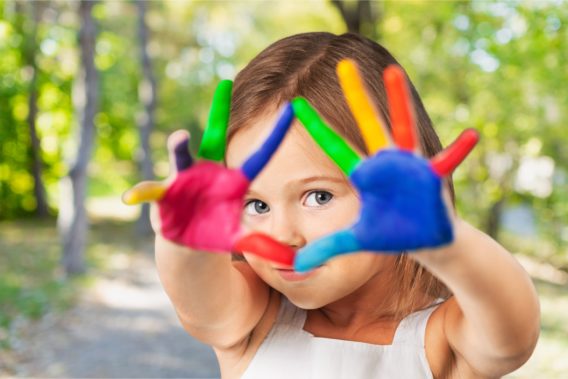
These include:
The tone of your voice.Calming activities can and should be part of every day life, especially if your toddler has a tendency to get emotionally intense.
These daily calming activities can include:
Having a playlist of classical tracks is a great way to gently stimulate and modulate your toddler’s energy levels. Music is great for winding down a personal favourite of mine is…
Pachelbel’s ‘Canon in D Major’
Also, it can be a lovely part of a routine to include music, for some reason our morning happy anthem, when we are all getting for school is,
‘Vietnam’ by Jimmy Cliff
It has a calming and yet energizing effect on the whole family, we are nicer to each other and we all trot around the house and get ready much more quickly and happily.
At night-time, there are some beautiful classical lullabies such as…
‘Air on a G String’ by Bach
or nothing beats mums and dads singing their toddler’s favourite lullabies, my children still ask me to sing them…
‘The Manx Lullaby’
which I like as my family have a tiny bit of Manx ancestry.
Chaotic schedules can make many toddlers much more likely to melt down. They lose a sense of what the next steps are. Having regular bedtime routines, snacks, drinks, rests and meals helps your toddler feel safe and calm.

Your toddler needs lots of physical activity but she will also benefit from quiet focused art activities such as finger painting, pavement chalking and drawing.
Physical activity has a calming affect on all of us. When our bodies and minds are working together we feel more in sync or in flow, our breathing is more optimal and this has a knock-on effect on our physiology and emotion. Your toddler will benefit from the positive feedback of physical exertion, deep breathing and fresh air and this helps to boost her overall calm and contentment.
Although many of us live urban lives, it is absolutely vital in my opinion that we let our toddlers commune with nature on a daily basis. The colour green is one of the most calming colours in the spectrum. Toddlers have an innate love of natural history; plants, animals, rain, snow, grass, hills, pebbles, streams – take every opportunity to find or create an oasis of nature in your daily life.
Calming activities can also be ‘deployed’ in the midst of a meltdown. These interventions will be more focused and one-to-one – allowing you to help bring your toddler back to a state of calm.
These ‘firefighting’ calming techniques include:
Tone of voice
The tone and timbre of your voice as a parent cannot be overstated. You can say exactly the same sentence to your toddler and sound cajoling and panicked, or calm and authoritative. Your toddler will pick up on the emotion in your voice instinctively so if you tend to either get quickly angry, or quickly panicked in the midst of a toddler meltdown, it is crucial that you practice and get used to slowing your breathing, breathing from your abdomen – and speak calmly and with reassuring authority. The effect is like a magic spell. Your toddler will naturally slow down his breathing and his rhythm and once this process begins he will be better able to listen and respond rather then simply ‘broadcast’ his feelings outwards.
Touch

You already know this and doubtless you have long employed a calming, soothing touch on your toddler. Feel confident in the power of your touch as a parent to soothe and calm your toddler whether you wrap him up in your arms for a cuddle or stroke his hair or back.
Rhythmic movement
Again, parents and grandparents since the dawn of time will have used physical movement and rhythms that copy our heartbeats or our footsteps. If you rock your toddler in your arms he will quickly focus on this movement and inadvertently move his attention away from the anger or sadness he feels. Movement is soothing and will help him return to a state of calm.
Sidetracking
This tip comes with a caveat. Our emotions are real and our toddler’s emotions are real. That’s not to say that they are not also sometimes seemingly ridiculous and absurd to us from the outside, especially if the meltdown in question seems to be over something tiny like having too much butter on a crumpet! So it is important to generally acknowledge your toddler’s emotions e.g., ‘I know that you are angry about the butter.’ However, that said, sometimes toddlers want a quick escape from the overwhelming emotion that has taken over their consciousness. Calling off your toddler’s attention to something absurd or interesting can sometimes have an instantaneous effect, e.g., ‘Look at that cat about to jump off the roof’ – you will know what things are more likely to be compelling and cheering to your toddler and you will be amazed at what a powerful tool sidetracking is in your parent toolkit.
In some ways, toddlers are utterly mindful. The truly live in the moment, in the zone. They experience flow and can be completely absorbed in the process of what they are doing without thinking about the end result or having an inner voice commenting on what they are doing and how they are failing.
Mindfulness describes paying more attention to the present moment – to thoughts, emotions and the world around you. Learning mindfulness techniques has been shown to improve mental wellbeing in prisoners, patients with depression, adults in general and children.
There has been a welcome explosion of interest in recent years in how ancient mindfulness techniques like meditation can help us in our day to day lives, with apps like Headspace being hugely popular.
There is also an interest in the education sector and groups that work with troubled children to bring mindfulness into the classroom and their lives.
I find this mindfulness movement hugely exciting and encouraging. I think that the two best places to begin with mindfulness are:
a) When you become a parent and experience the seismic shift in calm and control in your life.
b) When you become a toddler and your natural mindfulness can start to be replaced by increased anxiety, concern about the future, self-reflection etc. If we can help our toddlers to stay calm and mindful we can make their childhood’s happier and their own developing minds calmer, more centred and balanced.
So, whilst mindfulness is the modus operandi of toddlers, they can often really struggle to keep calm.
Here is a list of naturally mindful activities that you can incorporate with your toddler and begin to make a habit of it in his life:
Tasting
Take a juicy peach or a piece of chocolate each and describe and notice all the sensations as your very, very slowly eat it – start by smelling the food you are about to eat. When your toddler is little he may only be able to take part by listening to you and slowly eating his food but this is the first step in mindful eating. In time he will love to describe the delicious flavours, smells and textures.
Breathing
Toddlers are naturally good belly breathers but it can help to have a lie-down time, either during the day or before bedtime. Lie side by side with your hands on your bellies and breathe so that your hands rise up on your tummy. Ask your toddler to breathe slowly and see his belly rising and falling. Ask him to feel his hands heavy on his tummy. Count your breathing slowly up to ten, your breaths are naturally deeper than your toddler’s – so don’t expect them to be able to breathe as slowly and deeply as you, but your breath will help his to slow and deepen too.
Body consciousness
This technique is especially useful at bedtime, especially if your toddler is overtired or fidgety. In this classic relaxation technique ask your toddler to contract his muscles hard and then relax them. Starting with the extremities and moving up. It can be a bit of a challenge to know how to contract some muscles so simple instructions such as ‘squeeze your hand into a fist as if you are squeezing out a sponge’ or ‘screw up your face and pull a silly face and relax your face, let you’re face feel heavy and still now’ – different descriptions work for different children and you will need to bear in mind your toddler’s ability to understand you and follow instructions. This will get easier over time.
Toddler massage
Don’t think that baby massage has to end when your baby becomes a toddler. Massage can be a lovely after bath calming ritual. You can either massage over your toddler’s pyjamas but for a more physically mindful massage use a gentle carrier oil suitable for toddlers (such as extra virgin olive oil).
Start with your toddler’s feet, gently squeezing them in your hand and moving your hand from toes to heel, without light tickling. Then do the same with your toddler’s calves and thighs. The same techniques can be used on his hands and arms. When you massage your toddler’s back or abdomen use gently fanning out movements like window wipers with a gentle rotating movement. You can also gently stroke your toddler’s tummy in a clockwise fashion which can help with digestion too.
Toddler massage should in no way be an extreme ‘deep tissue’ massage, instead stick to baby massage techniques that focus on the sensations of your toddler’s skin, without tickling which can be too intense and unbearable. Massage oil makes things less ticklish in general.
Never force a massage on your toddler. Most toddlers will love a relaxing massage but sometimes your toddler may be overstimulated or overtired and they will not feel like one. Similarly some toddlers just generally find massage too overstimulating and you need to respect his preference. He might instead like to have his back stroked over his pyjamas.
Emojis
Toddlers are only just beginning to reflect on their emotions. Even before they are able to articulate how they feel it can help them to be mindful and recognize their emotions by talking about events of the day and the emotions you both felt around them. You can print out some classic emojis of happy, sad, angry, surprised, scared faces or emojis. You and your toddler can point to the emojis that best describe how you both felt. This helps your toddler to recognise and notice his emotions which is a central part of mindfulness.
With these exercises, you and your toddler can begin to make mindfulness a habit which can help you to communicate with each other.